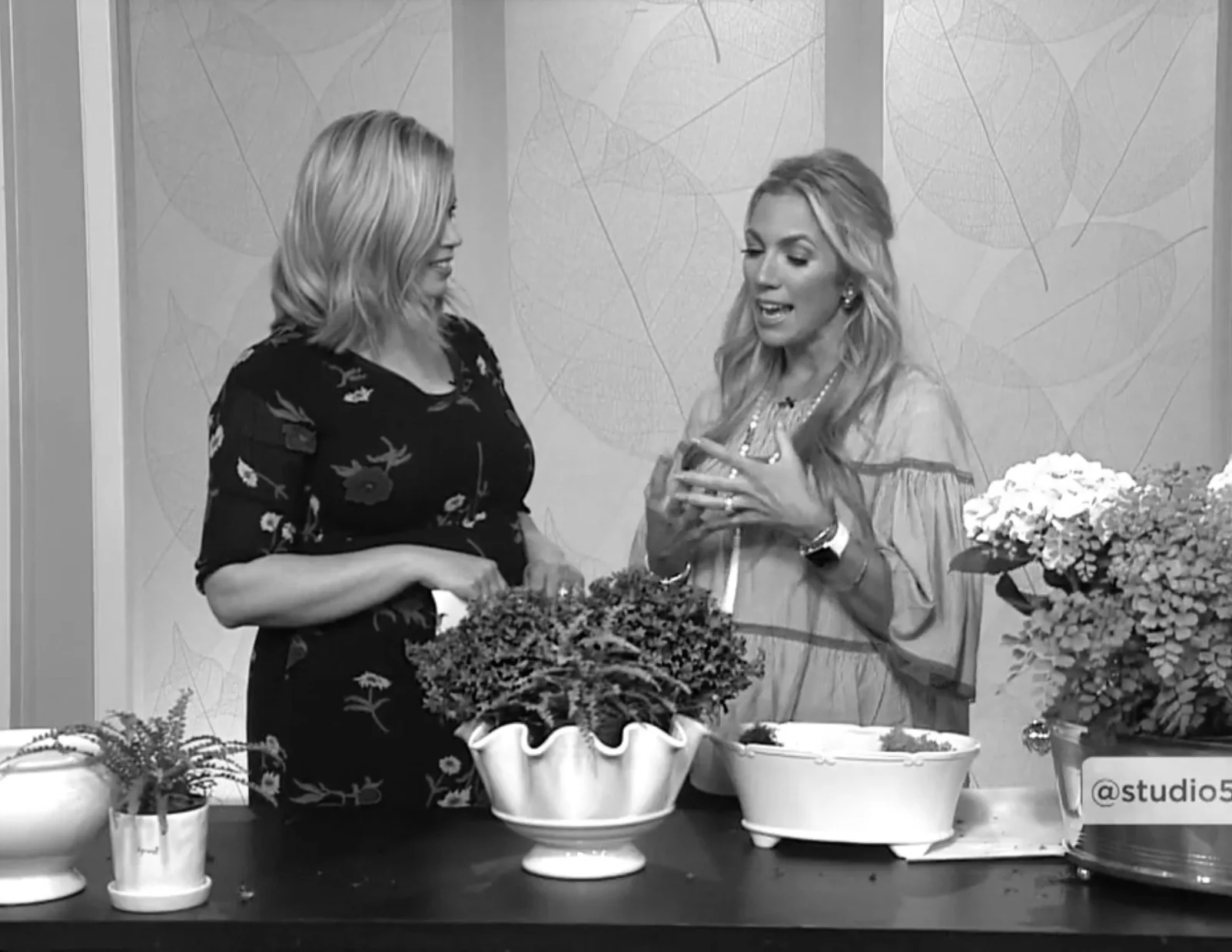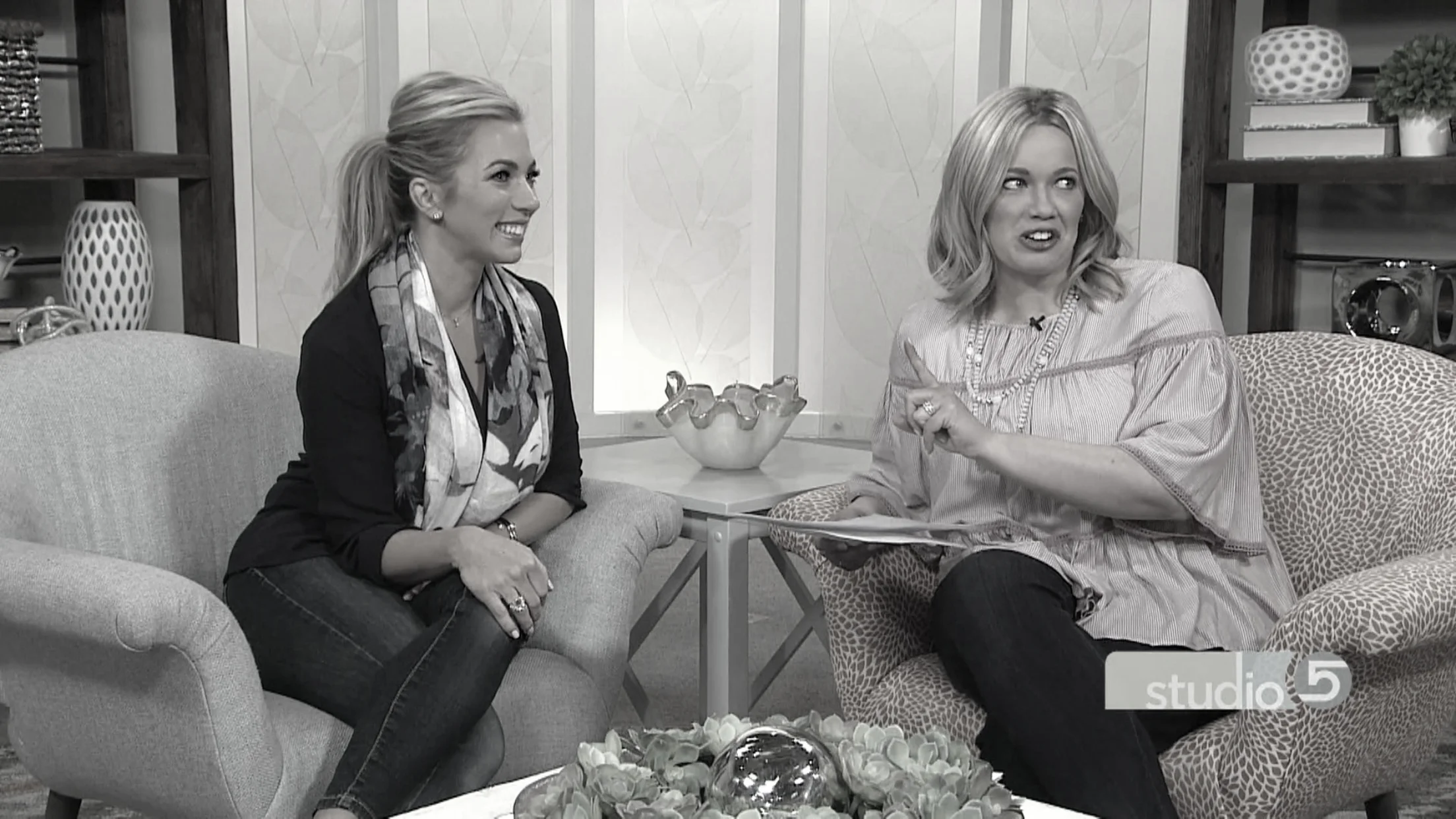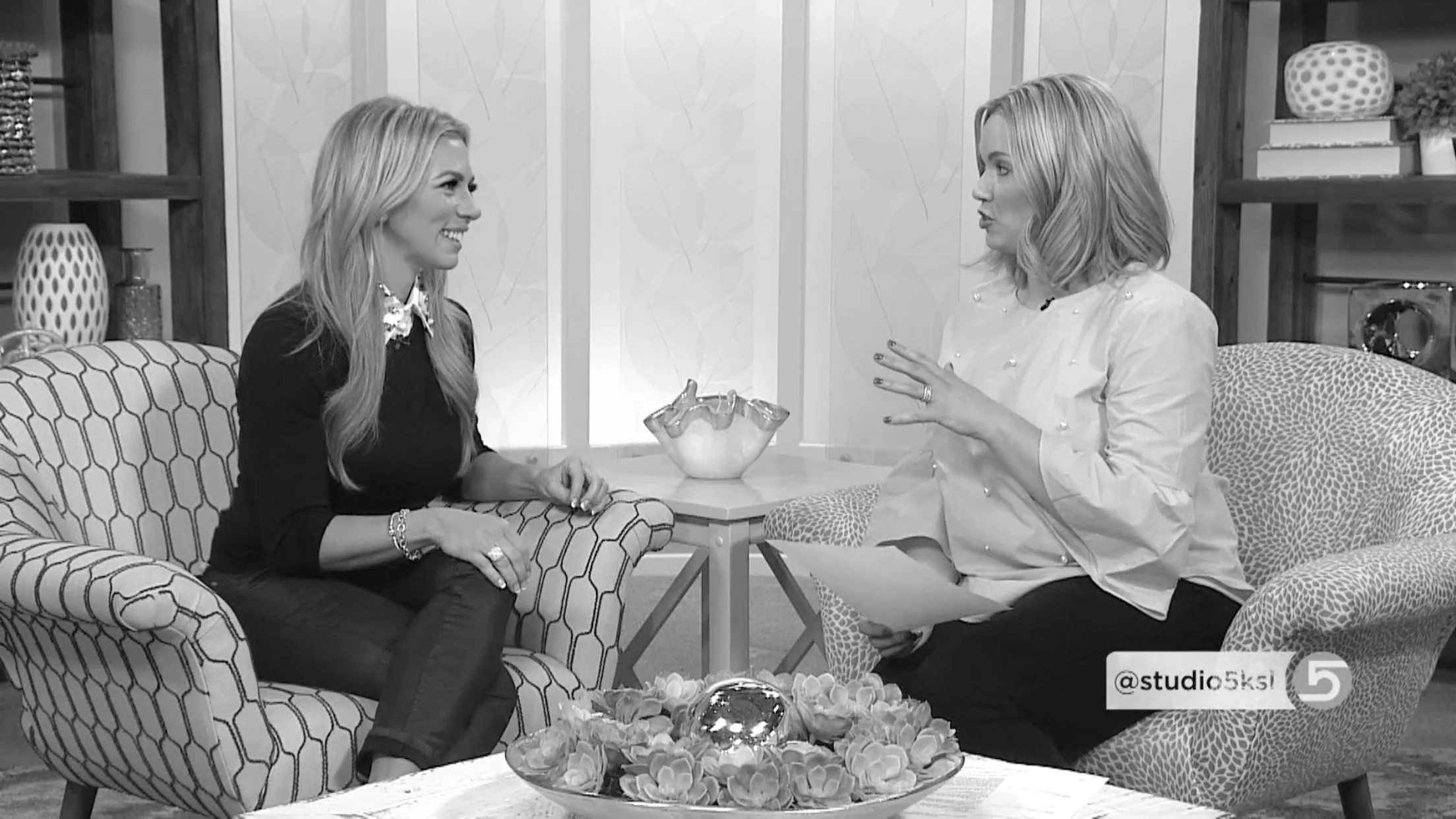Scroll down for a few more tips we didn't have time for on air. Leave a comment and let me know what you're going to do to give your home a Spring Refresh!
1. Test, Test, Test! Exterior colors always appear at least a few shades lighter when you use them outside. So that paint color everyone raves about in their living room won't look the same on the front of your house. Paint a large poster board that you can tape up on your front door - be sure to check it morning, noon and night! Cloudy days are best to see the true nature of a paint color and how it will relate to your other exterior finishes and materials.
2. We talked on air about helping that BOLD new color relate to other things on the facade of your home. Flower boxes, shutters, even your garage doors can be painted in the same color to reinforce your choice. If these more permanent solutions aren't for you - consider bringing in a porch swing, pair of rocking chairs or some other furniture pieces that can be painted to match your new front door. Can we say, "curb appeal?!"
3. Make sure you realize that going with a dark color isn't always the best choice. I just helped a client with a long porch on her home to paint her door lighter (to match window trim) and away from the darker blue it was painted, even though I liked the color. The reason? Her porch was covered in such a way that the dark door receded and disappeared from view. By painting it a lighter color, the door was brought back into view and gave balance and focus to the front of her home. Light colors come forward, dark colors draw the eye back.
Watch below or click here -
- Pick a style and stick with it
- flow and continuity from exterior to interior. no matter the style, the homes that are true to a historic style are ALWAYS going to have value and feel classic.
- Establish your finish range.
- This applies to colors you’ll use in the home, wood tones, plumbing finishes, hardware for cabinets, and more. This is KEY to achieving flow and a good continuity from room to room. As we’ve talked about - you take that bag of dice and re-roll with each room… you’ll get a new combination of color but not depart from your overall style and concept.
- Pay attention to the floorpan
- Maximize traffic flow and be sure to space plan so you know that bedrooms can accommodate a queen or king bed, your family room can fit a 90” sofa, your entry is deep enough for that necessary entry table, and your dining nook can seat as many as you need it to. This is a HUGE part of the “peace of mind” which so many homeowners struggle with during their build.
- Create rooms that are mulitpurpose
- It will help you long term as “Seasons of life” change, and also for resale
- Lighting design and HVAC planning is important!
- Yes, homes need to be properly lit and properly heated and cooled, BUT guess what, not all HVAC companies care about the aesthetics of your home - do your best to have those conversations before you frame the house so you can hide ceiling duct work in decorative elements like coffered ceilings and closets where you will not see them
- As for lighting, avoid Swiss cheese can light syndrome and carefully consider where can lights are best placed. I am always in favor or perimeter lighting and smaller, 4” cans to create ambient light in a room. Decorative lights are GREAT for both wattage and creating interest and beauty overhead. They also SELL the style of the room before you ever furnish it.
- Know where to splurge and where to save.
- You may quickly get overwhelmed by feeling like you have to have the most expensive of everything at every level and in every room. There are places to splurge (wood floors, light fixtures, millwork)… but in secondary spaces like bedrooms, basements and other bathrooms, you can do a high-low concept where you consider porcelain floors, pre-made cabinets, etc. If you establish a game plan of finishes and stick with it, it won’t be jarring when you move from one room to the next.
- Be smart about storage : think ahead about the spaces you’ll need it - and don’t mess with bulky closets where you don’t. It will cut down on your usable square footage and interrupt the flow. Tuck linen closets into bathrooms, cleaning closets into laundry rooms, and so forth. Don’t we all want to live with less, anyway!





